A Celebration of Phantom Broadway
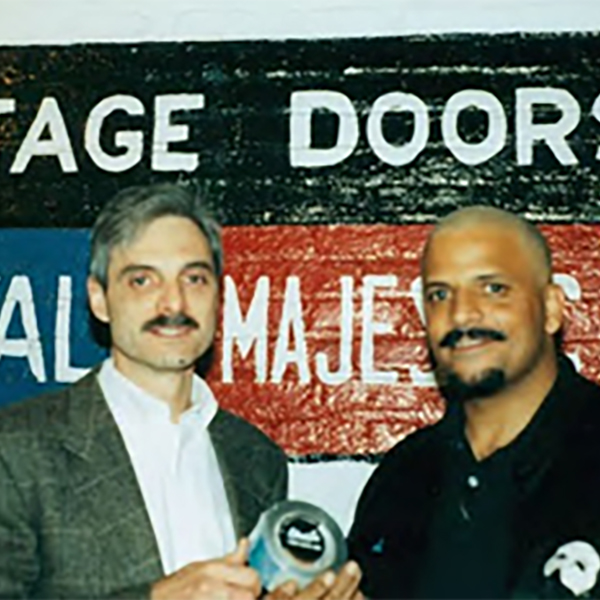 | 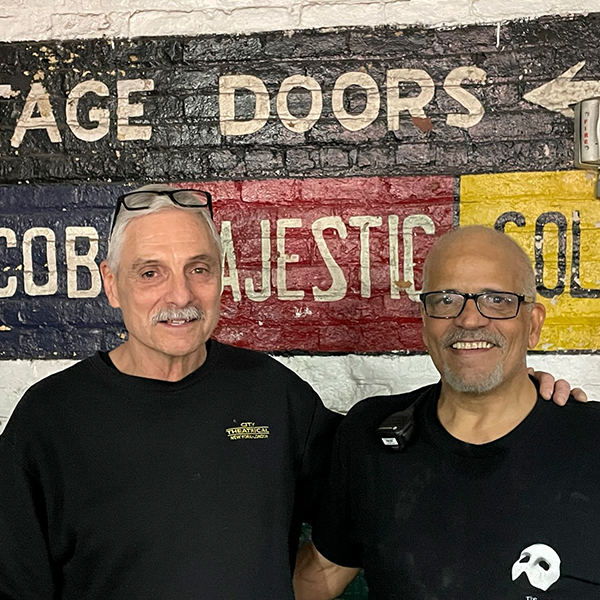 |
Gary Fails, Founder and President of City Theatrical, and Alan Lampel, Head Electrician of The Phantom of the Opera on Broadway, 1993 vs. 2023, after the show's final performance. Scroll down to read our interview with Alan Lampel from April 2013.
The Phantom of the Opera took its final curtain call on Broadway on Sunday April 16, 2023, ending a record-breaking 35-year-long run in New York.
Following the show, members of the current and previous cast stood on stage at the end of the final performance in New York with composer, book, co-orchestrator Andrew Lloyd Webber and producer Cameron Macintosh to sing "The Music Of The Night" together, one last time. The final April 16, 2023 show marked Phantom's 13,981 New York performance.
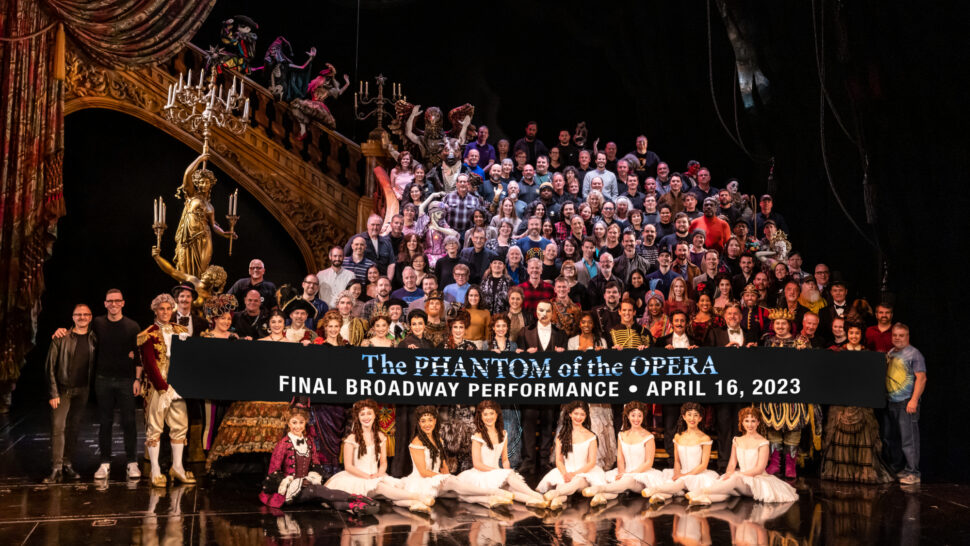
Final cast, crew, and orchestra of Broadway's The Phantom of the Opera. Photo by Matthew Murphy. Source: Playbill's "A Majestic Finale: The Phantom of the Opera Ends History-Making Broadway Run April 16" .
We are proud that City Theatrical products played a role in this longest running show in Broadway history.
City Theatrical Dry Ice Foggers, among other unique lighting accessories like our first WDS, Dimmers, and lots of beam control accessories, have been used on the Broadway production of The Phantom of the Opera for all 35 years of its production.
Here's a note about how we got started with Dry Ice Fog at Phantom, extracted from our 35th Anniversary Story (page 25):
Several large opportunities presented themselves in the early ‘90s. The first were in the field of dry ice fog. The Phantom of the Opera had just opened on Broadway and was a huge hit. The show had several fog cues that were vital to the show, and they used dry ice fog to achieve these effects.
At that time, 55 gallon steel drums were used to make dry ice fog. That was state of the art at the time. They were manufactured by a couple of companies including Big Apple Lights in NYC, and Howard Eaton in the U.K. The Phantom machines were made by Howard, who we did not know at the time but has since become a friend and colleague in the entertainment world. The 55 gallon drums, being steel, were prone to rusting and leaking, and needed to be replaced often.
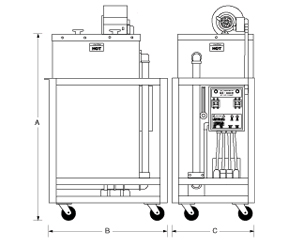 | .jpg?Status=Master&sfvrsn=88d3cfa6_3) |
The show asked City Theatrical if we could design a machine that would not rust. We had a lot of experience forming and welding stainless steel, so it was pretty easy to design a large fog machine with a stainless steel tank. We made a
pretty nice design and sold six to Phantom in NYC, then made them for all of the Phantom road companies, and then the Miss Saigon companies, the Les Miz companies, and many other shows. At one time,
if you were using low lying fog on Broadway it was one of our SS6000 Dry Ice Foggers (now a legacy product). The Phantom dry ice foggers we developed are still in use and working perfectly after 35 years!
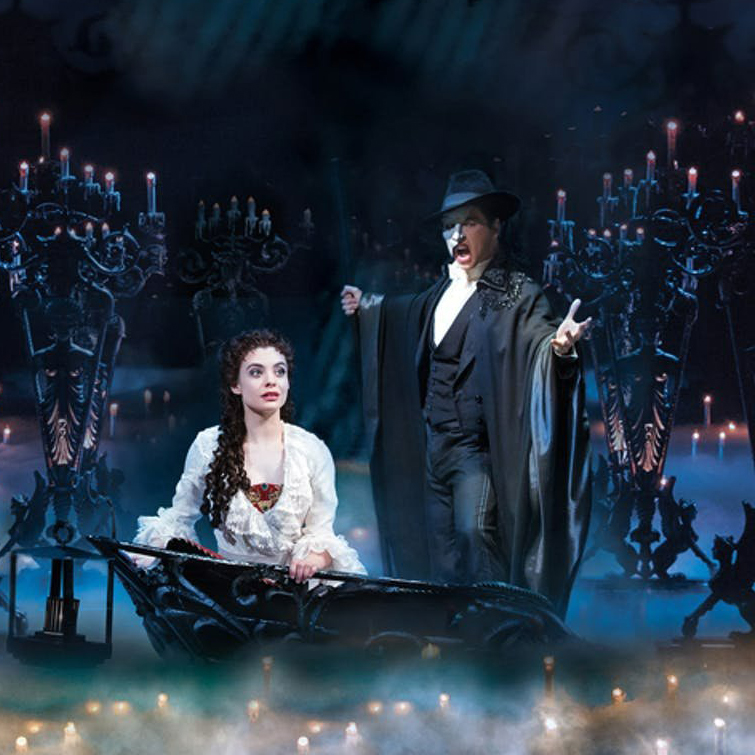 | 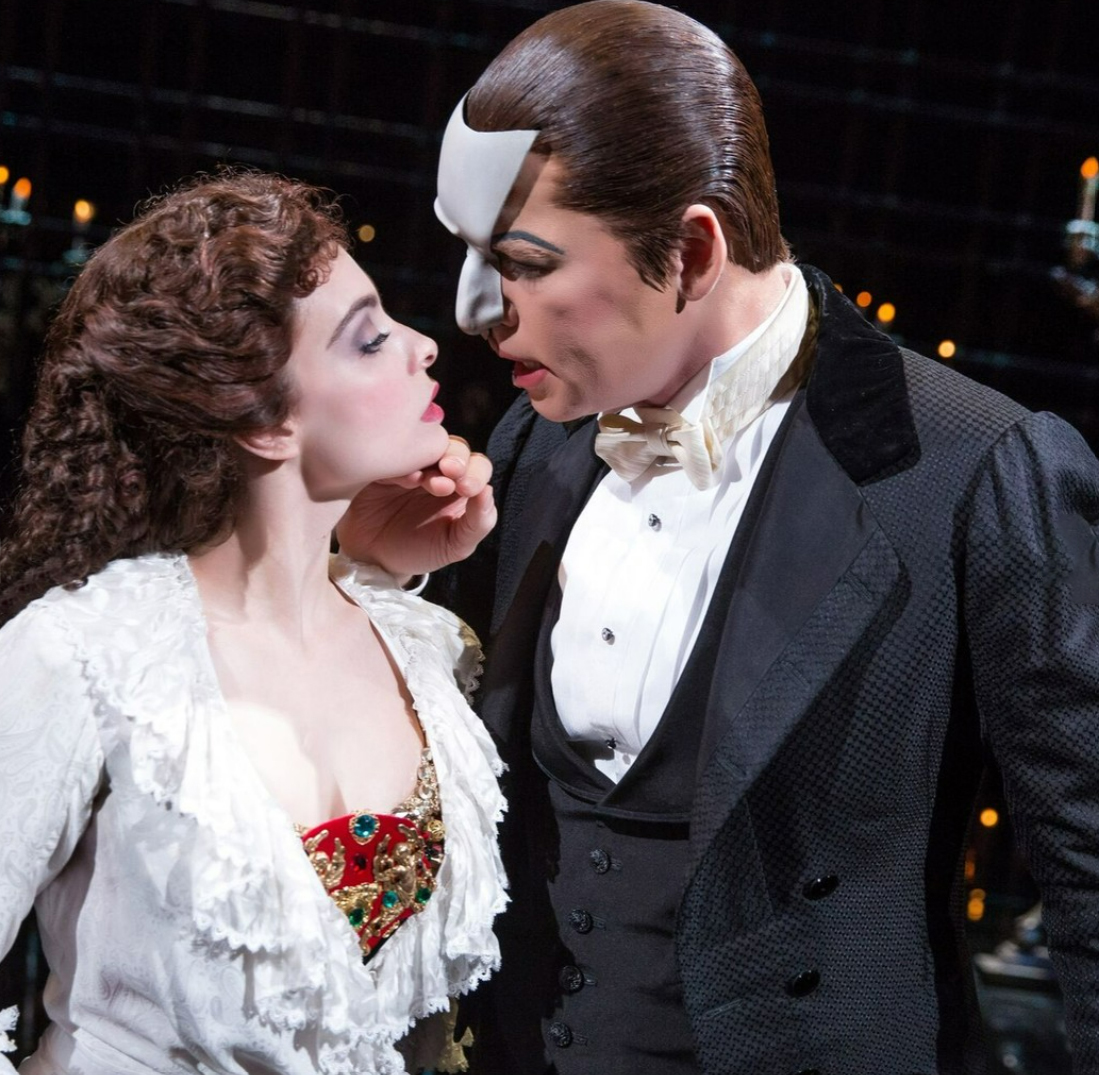 | |
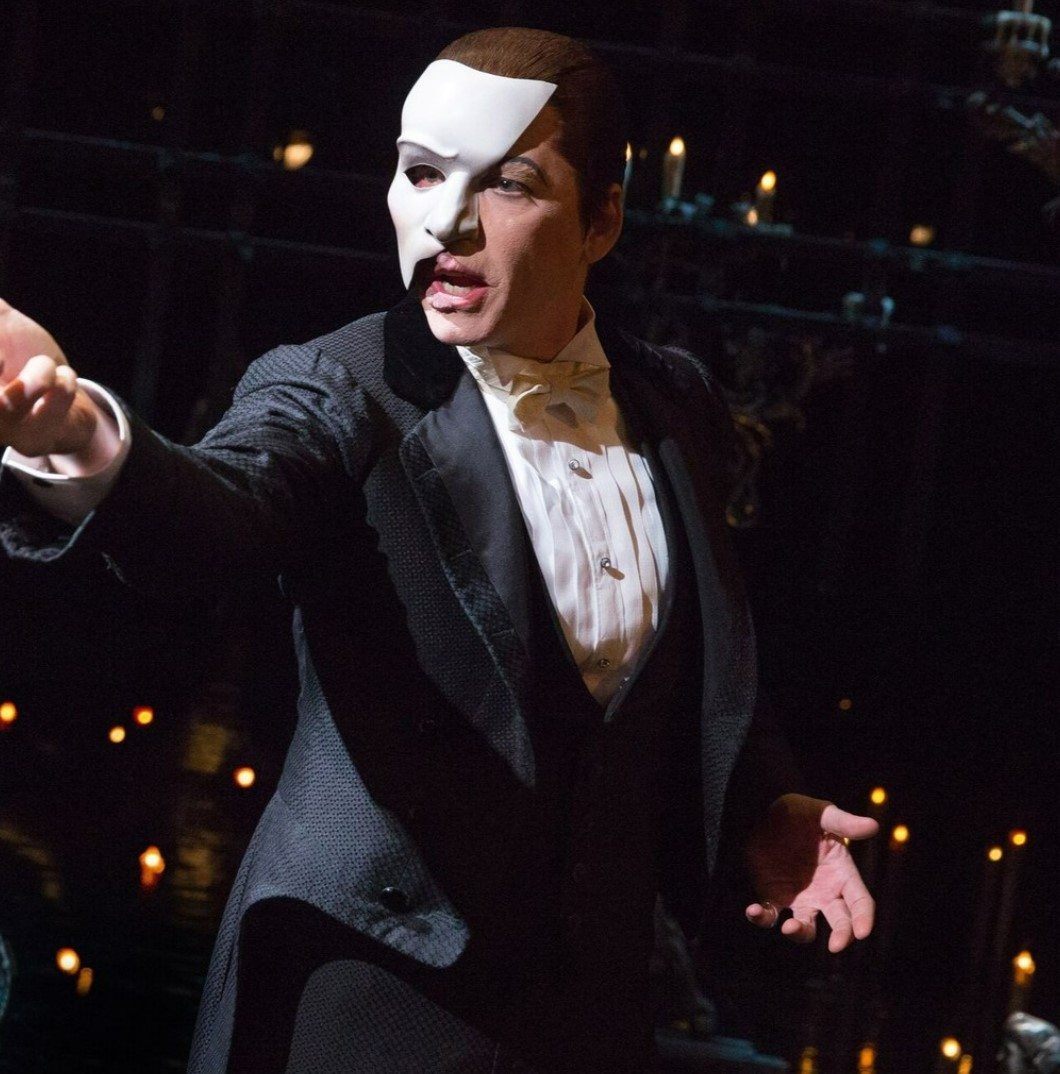 |  |
Congrats to the many creative teams behind the show, especially our friends behind the show's lighting! A special congratulations from your friends at City Theatrical to Lighting Designer Andrew Bridge, Associate Lighting Designer Vivien Leone, Production Electricians Robert Fehribach and Ron Schwier, and Head Electrician Alan Lampel.
Watch the show's cast and crew, including Andrew Lloyd Webber, from over the years celebrate Phantom's history with closing night curtain call and speeches.
To celebrate Phantom's legacy, we are sharing our classic interview with Head Electrician Alan Lampel from 10 years ago.
Re-posted from City Theatrical’s April 2013 Newsletter:
25 Years Of Dry Ice Fog On The Phantom Of The Opera
There has never been a show as successful as The Phantom of the Opera. It's the longest running show in Broadway history and has played all over the U.S. and the world on tour.
Here are a few facts and figures about the show:
- Played to over 130 million people in 29 countries in 150 cities around the world with an estimated gross of $5.6 billion worldwide. The box office revenues are higher than any film or stage play in history, including Titanic, ET, Star Wars and Avatar.
- Played for more than 26 years and almost 11,000 performances at Her Majesty’s Theatre, London
- Won 70 major theatre awards including 3 Olivier Awards, an Evening Standard Award, 7 Tony Awards including Best Musical, 7 Drama Desk Awards and 5 Outer Critic Circle Awards.
One of the most important moments in the show is when the Phantom takes Christine in a boat to his underground lair. The stage is filled with low lying dry ice fog and the effect is one of the most memorable in theatre history. The story of why this type of fog is used, how it is created, how it is controlled, and how it is maintained each night by the backstage crew is a great example of how professional theatre is done at the Broadway level.
The Broadway company of Phantom uses six City Theatrical SS6000 Dry Ice Foggers which are finishing their second decade on the show.
We had a chance to speak with Alan Lampel, who has been with Phantom since the beginning and has run the show night after night for over 25 years.
Phantom Lighting Credits:
- Andrew Bridge - Lighting Designer
- Vivien Leone - Associate Lighting Designer (USA)
- Robert Fehribach - Production Electrician
- Alan Lampel - Head Electrician (Original)
2013 INTERVIEW WITH ALAN LAMPEL:
City Theatrical (CTI): How did dry ice fog come to be used on the original production of Phantom?
Alan Lampel (AL): Dry ice fog was used in the original West End production. Six machines were always prescribed for the Broadway production. We opened the show using the very traditional “55-gallon drum” type machines. Because of the extended use of production and previews, those original machines were quite well worn within a year.

CTI: Describe how fog is used in the show.
AL: The dry ice type fog, at least in my opinion, is the best way to create the perfect “NAP of Water” surface effect. The greatest challenge to succeeding at this is to minimize the air currents and breezes that so easily “blow” the effect away. The NAP, at its very best, should be a minimum of six inches to a maximum of around a foot. There needs to be enough to provide for a foggy Underground Lake surface that the Phantom’s gondola may appear to float gently on through a maze of independent candles, magically punching up through that same foggy surface. The six inch minimum is to successfully cover up the 100 plus miniature trap doors while the boat makes its journey.
CTI: How did the idea of a more durable dry ice fogger come about? What challenges were you facing on the show?
AL: We opened the show using the very traditional “55-Gallon Drum” type. Because of the extended use of production and previews, those original machines were quite well worn within a year. For the next three years, a great deal of maintenance went into what was a flimsy product. Then, City Theatrical started to put out what was to be the most durable product available, in the stainless steel SS6000 series fog machines. Around 1994 a custom set of SS6000s were made for the Phantom Music Box tour. It was at that time that Bob Fehribach and company decided to get a set of six SS6000s for the Broadway and Christine Dae productions, as well as the Raoul touring company.
Well certainly in hindsight, the amazing success of this show speaks to the need for durability. Yet the sheer physical demand exerted on each machine, eight times a week, for so many years, takes its toll.
CTI: Please describe the layout of the machines and the ducting to the stage.
AL: The footprint of the new machines took the same as the old. The changeover to the new barrels did dictate the need for new 6” piping, for which I decided to use 6” PVC pipe. It was a decision based on the insulating qualities of the PVC pipe and because of the ability to clean the smooth PVC pipe, compared to the traditional flex hosing up until that point. The hard pipe provided for the most unobstructed flow of the dry ice fog. The hard PVC was also the perfect tool to “Plumb” around a particularly tight layout in the basement trap-room of the Majestic Theatre. In some cases, the new form features of the new machines dictated the need for slight relocations. Accomplishing the shortest routes to the stage while attempting to keep the lengths of mated machines’ piping as equal as possible, was my goal. The PVC is perfect in every way.
CTI: What is the daily, weekly, and monthly routine of using and maintaining the machines, and how does that fit into the overall workload of yourself and your crew?
AL: Our biggest daily concern is the “turning on” and “turning off” of the heating elements, the timing of which is most important for the quality of the fog per show, as well as loading the ice, which happens twice during the show. For each side of the stage, there is one deck electrician who is responsible for breaking down ice blocks into optimum size and loading them into the barrels.
Weekly, there is a need to fill the water levels back to an optimum operating depth in each barrel. Instead of monthly, we currently have implemented an “empty, rinse and re-fill” of one barrel per week in a rotating sequence, until all six are done and then we begin that sequence again. There is also a yearly need to replace the heating elements in all of the machines, which we accomplish by changing two each week over the course of three weeks (usually in January).
CTI: The fog scenes are crucial to the plot of the show. How do you make sure that it goes well every night?
AL: Well, half of the battle is the consistency of those things you can control: 1) Timing of the heaters – when to begin heating and when to turn them off (these times are different on matinee days as you have two shows) and 2) The consistency in quality of dry ice, which may not actually be in your control, and the size to which the blocks are broken down into, because “size does matter.”
Once those things are well in hand, we move onto those things we don’t have as much control of: The weather conditions onstage, as well as the weather conditions out-of-doors. As I said before, it is crucial to the Underground Lake effect to have the greatest amount of stillness of the air onstage. Of course, breezes and down drafts are caused by many things. Doors and/or windows left open when they should not be the most direct factors in causing windy conditions during fog moments. But they can also be affected by just how the theater’s blowers for air-conditioning (or just blown air), are used, depending on the time of year. I could go on forever about the air conditions and their inconsistencies, for there are many.
On the Raoul Tour, the design team took great care to contact the management of each theater to maximize air control.
 | 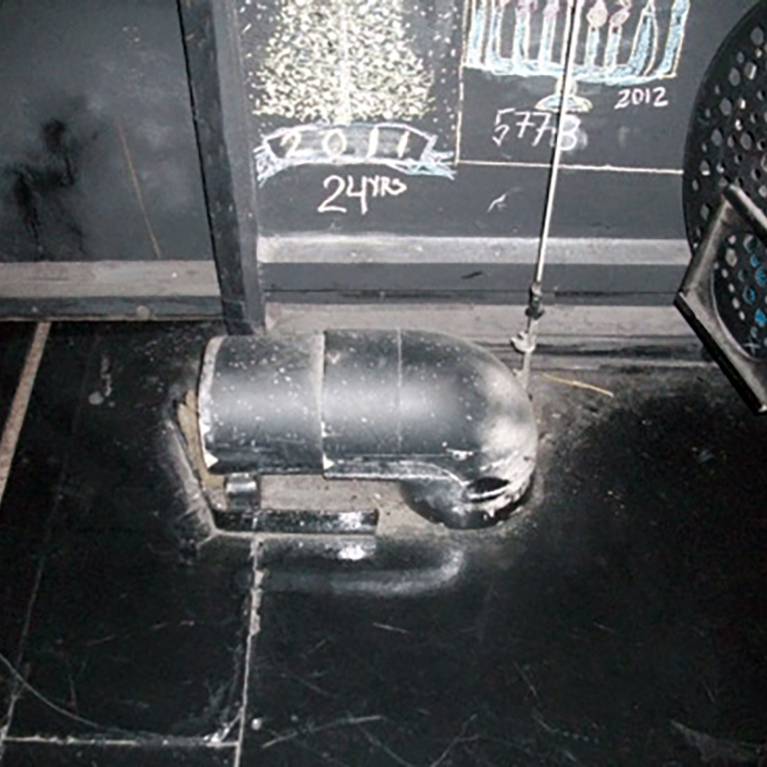 | 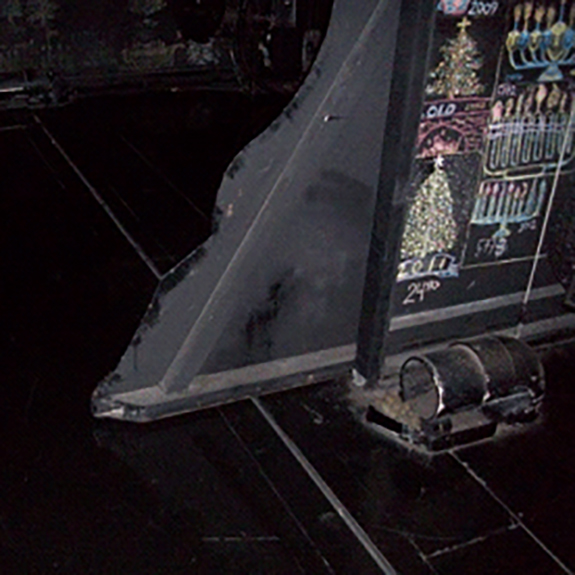 |
To continue about NYC, one control that I, the board op, have is the ability to blow the fog up onto the stage with considerable variation, using dimmers to control the blower fans on the six machines. These fans are paired up as DS, MS and US; with the ability, in fact, to separate the US pair to provide even more control. Those three sectors are simply at hand via three submasters on the light console. I have even dedicated three other submasters to be able to take manual control of the fog machine’s pumps. They are programmed to operate via the board, but there are times to intervene with their automation.
So, with the aforementioned control, I do have the ability to “Texture, Fill, or Paint” the fog to suit the look. This is accomplished more easily at certain times of the year than others. Aside from the indoor conditions, seasonal weather is a major factor in good Lake fog. The winter months are decidedly the toughest months to produce the best fog.
With all these factors in mind I use a certain combination of intensity levels on the fog machine’s fans, as they are paired up, to pour out efficiently and continue to supply the right flow without blowing too hard, as not to disrupt that which has been laid out. There really does exist a fine line between success and failure in attaining this goal.
CTI: How do the actors feel about the fog on Phantom?
AL: The three actors most directly affected by the Lake fog are Phantom, Christine, and Raoul. I have not really gotten any direct negative notes, but the worst that Phantom and Christine encounter is when the fog is either too thick, causing an unrealistic look, or too thin, which leaves us ALL tragically suspending disbelief!
As for Raoul, I do believe his greatest concern with the fog is how he must make a jump through it, onto a “dive mat” into the trap room. There is an edict on the criteria for Raoul taking his jump that is to never take the jump if he cannot see the landing lights on the dive mat, and to make his exit afoot instead of doing his jump.
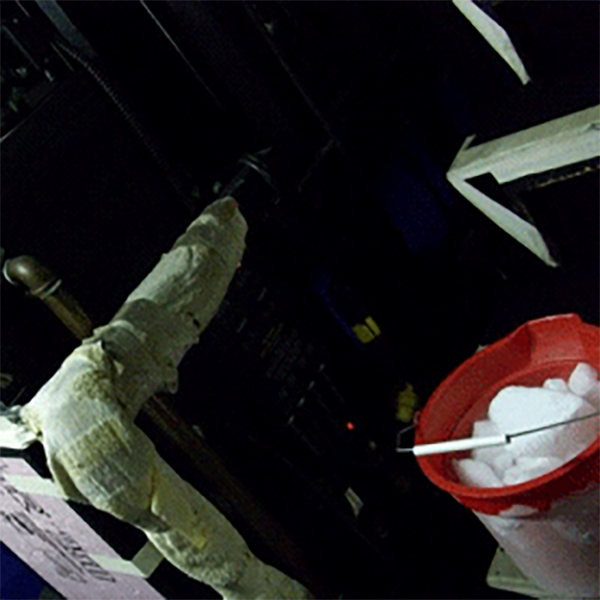 | 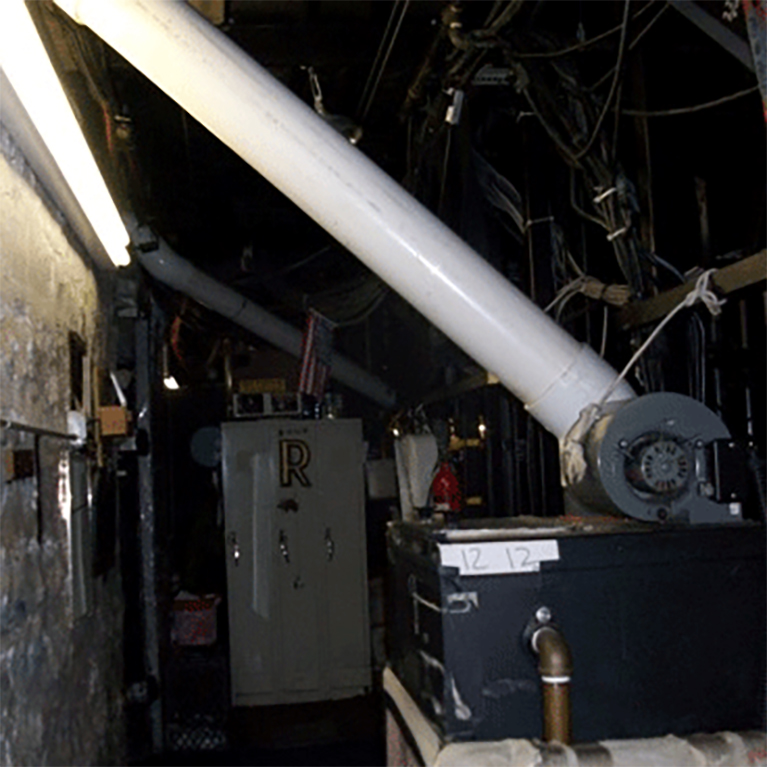 | 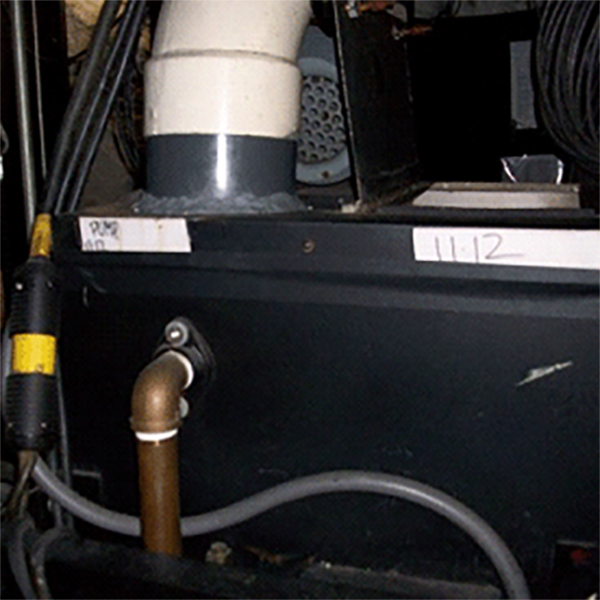 |
CTI: What has it been like for you to be part of such a long running show?
AL: Before Phantom, the longest run of a show I was ever on was 35 weeks. From very early on, the longevity of this show was apparent, but never could I have predicted this kind of grand success. I have always been in love with this show. Starting with my days at Four Star Lighting building the show’s components, I was impressed with the concept of the show. It was from very early on that my heart and soul were dearly attached. As with most love affairs, there have been many (and memorable) ups and downs along the way.
CTI: If you were starting over again today, what would you do differently in the setup or operation of the fog?
AL: Aside from the improvements already made, such as the insulating and smooth delivery qualities of the PVC pipe, the only thing I would change would be to shorten the length on all of the piping. Space in the trap room has always been at a premium. There really were not a lot of options to improve on what we have now.
But as I have said, I would not change our use of dry ice (only), type fog.
I am currently building a new automated switching system for the fogger’s heaters. For 25 years the heaters have been turned on using the breakers on one of the show’s distribution panels. This has led to their periodic mechanical failure. The breaker became a perishable item. And as I have said, the weather changes that take place inside and out are always in flux. The way to deal best with those changes is to fine tune the machines’ heat. My improvement here will be to govern these heaters’ switches using clock or board operated modes. This will also protect against many unfortunate human error moments!
CTI: What has been the best part of the job for you?
AL: One predominate pleasure of being the Light Board Operator on the epic run of The Phantom of the Opera is derived from the three rather effective features that I get to “perform” live each night, as opposed to those that are preprogrammed or recorded into the lighting console. These are: 1) Playing a collection of 12 strobes during the show’s overture and a few accent moments throughout the show, 2) The manually operated (sometimes live) movement of two pipes of panning x-rays, and most of all 3) The nightly adventure of producing the Lake fog for the Phantom’s boat journeys and lair scenes. Being able to have these artistic inputs on the show has meant everything to me, especially when one considers the super-longevity of Phantom. Although creating the fog can be a day-to-day adventure (I consider there to be as many as seven climate or atmosphere changes at the Majestic Theater during any given year) it is extremely gratifying when I achieve the Perfect Look.
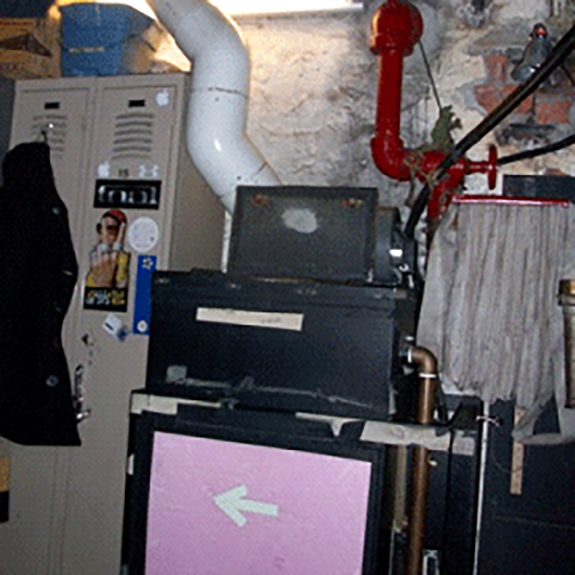 | 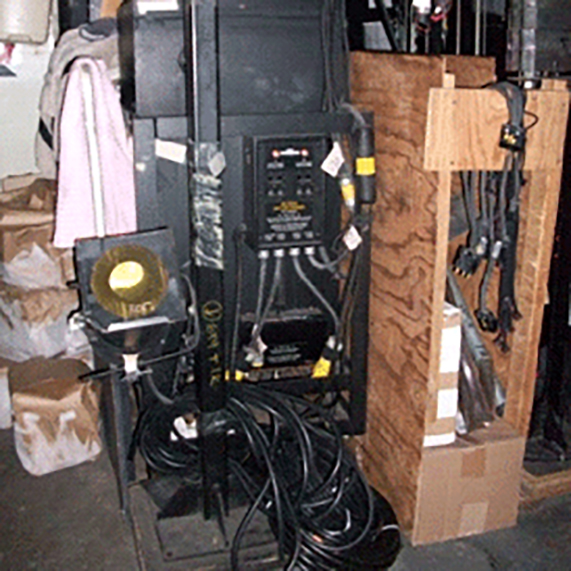 | 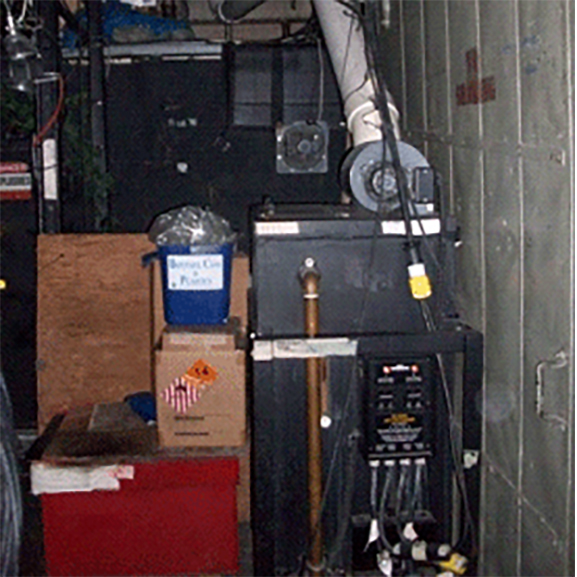 |
You can also read the Interview with The Phantom of the Opera's Alan Lampel (Original 2013 PDF).
Want more?
Read our classic June 2009 Interview with Roger Desmond, Head Electrician on the Tour of The Phantom of the Opera and more on our Interviews page.